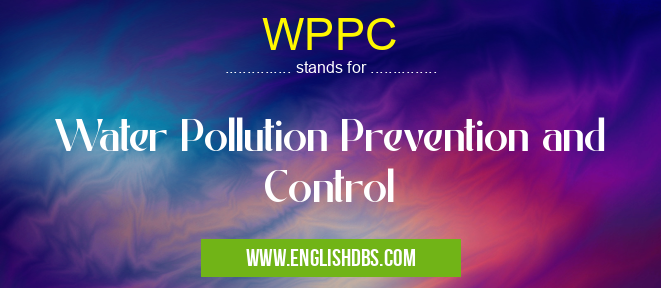What does WPPC mean in PREVENTION
WPPC stands for Water Pollution Prevention and Control. It is a comprehensive program designed to protect and restore the quality of water resources.

WPPC meaning in Prevention in Medical
WPPC mostly used in an acronym Prevention in Category Medical that means Water Pollution Prevention and Control
Shorthand: WPPC,
Full Form: Water Pollution Prevention and Control
For more information of "Water Pollution Prevention and Control", see the section below.
» Medical » Prevention
Objectives of WPPC
- Reduce and eliminate pollutant discharges into water bodies.
- Control and prevent water contamination from industrial, municipal, and agricultural sources.
- Develop and implement water quality standards and regulations.
- Promote water conservation and efficient water use.
- Foster public awareness and education about water pollution prevention.
Implementation of WPPC
WPPC involves a multi-faceted approach, including:
- Regulatory Measures: Establishing regulations, permits, and enforcement mechanisms to control pollutant discharges.
- Technology: Developing and utilizing advanced water treatment technologies to remove pollutants.
- Education and Awareness: Educating the public, industries, and municipalities about the importance of water pollution prevention.
- Enforcement: Monitoring compliance with water quality standards and enforcing penalties for violations.
- Collaboration: Partnering with stakeholders, including government agencies, industries, environmental organizations, and communities, to implement and enforce WPPC measures.
Benefits of WPPC
- Improved Water Quality: Protects and restores the quality of water resources, ensuring safe drinking water, healthy aquatic ecosystems, and recreational opportunities.
- Reduced Health Risks: Prevents waterborne diseases and other health hazards associated with contaminated water.
- Environmental Conservation: Maintains the integrity of aquatic ecosystems, preserving biodiversity and supporting recreational and commercial activities.
- Economic Benefits: Promotes sustainable water resources, reduces healthcare costs associated with waterborne diseases, and supports tourism and recreational industries.
Essential Questions and Answers on Water Pollution Prevention and Control in "MEDICAL»PREVENTION"
What is WPPC?
Water Pollution Prevention and Control (WPPC) is a comprehensive approach that aims to prevent and mitigate the contamination of water resources. It involves a range of measures and strategies to protect water quality and ensure its availability for present and future generations.
What are the main objectives of WPPC?
The primary objectives of WPPC include:
- Identifying and eliminating sources of water pollution
- Establishing water quality standards and enforcing regulations
- Monitoring water resources and responding to potential threats
- Promoting sustainable practices that minimize water pollution
- Educating the public about water conservation and pollution prevention
What are the major sources of water pollution?
Common sources of water pollution include:
- Industrial wastewater
- Municipal sewage
- Agricultural runoff
- Stormwater discharge
- Oil spills and other hazardous waste
- Deforestation and land degradation
What are the effects of water pollution?
Water pollution can have severe consequences, including:
- Threats to human health (e.g., waterborne diseases, chemical poisoning)
- Damage to aquatic ecosystems (e.g., fish kills, loss of biodiversity)
- Economic losses (e.g., reduced tourism, impaired fisheries)
- Degradation of water quality for drinking, bathing, and other uses
What are the key measures of WPPC?
Core measures of WPPC encompass:
- Regulatory controls (e.g., permits, effluent standards)
- Best management practices (e.g., pollution prevention techniques, erosion control)
- Infrastructure improvements (e.g., wastewater treatment plants, stormwater management systems)
- Monitoring and enforcement activities
- Public education and awareness campaigns
Final Words: WPPC plays a crucial role in protecting and preserving the quality of water resources for present and future generations. Through a comprehensive approach involving regulation, technology, education, and collaboration, WPPC aims to reduce water pollution, improve water quality, and ensure the sustainable use of our precious water resources.
